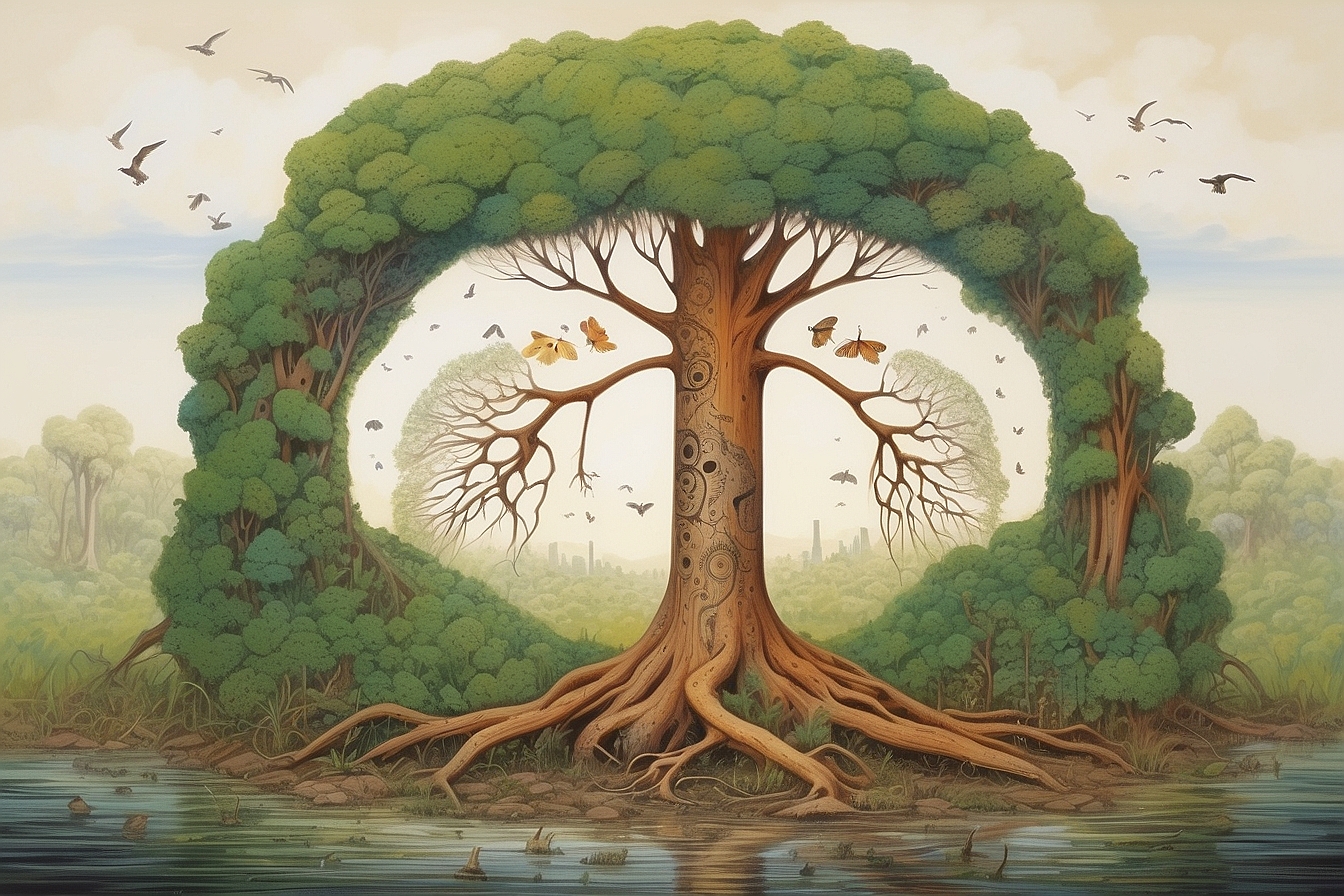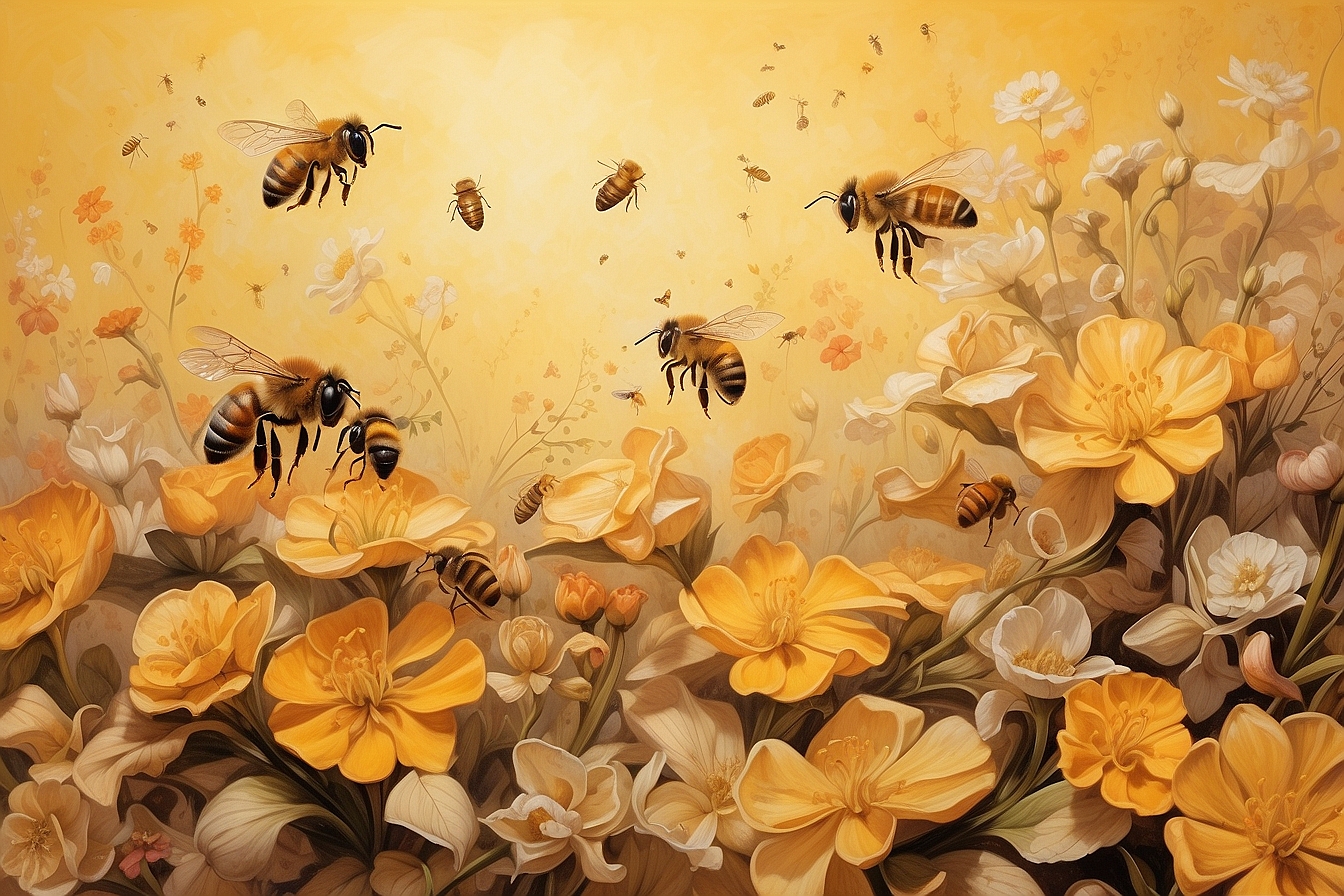Media reports and environmental discussions at nearly all levels of politics and academia have made most of us aware of the perils of invasive species and potentially new species respectively.
Introduction to Genetic Modification
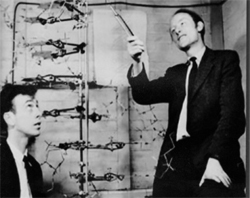 Francis Crick and James WatsoniThe first true consideration of genetics as a category of pollution perhaps spawned as far back as the genesis of the genetically modified organism (GMO).1 In most cases, GMOs refer to genetically modified food crops that humans consume, and a strain of antibiotic resistant tobacco plants in 1983 are among one of the first organism on which the new field genetic engineering was demonstrated upon.2 To understand the concept of genetic pollution, however, one must go back as far as 1854 during a time when Austrian monk Gregor Mendel was beginning to uncover the mysteries of inheritance through a series of experiments involving the cross breeding of pea plants.3 In a nutshell, Mendel was able to decipher a very simple form of inheritance and hypothesized the existence of some heritable material in the plants gametes that was responsible for transmitting traits to the plant’s offspring. Fast-forward a century later to 1962 when Francis Crick and James Watson won the Nobel Prize in medicine for deciphering the structure of DNA,4 which even today is maintained as the most basic molecule of inheritance.
Francis Crick and James WatsoniThe first true consideration of genetics as a category of pollution perhaps spawned as far back as the genesis of the genetically modified organism (GMO).1 In most cases, GMOs refer to genetically modified food crops that humans consume, and a strain of antibiotic resistant tobacco plants in 1983 are among one of the first organism on which the new field genetic engineering was demonstrated upon.2 To understand the concept of genetic pollution, however, one must go back as far as 1854 during a time when Austrian monk Gregor Mendel was beginning to uncover the mysteries of inheritance through a series of experiments involving the cross breeding of pea plants.3 In a nutshell, Mendel was able to decipher a very simple form of inheritance and hypothesized the existence of some heritable material in the plants gametes that was responsible for transmitting traits to the plant’s offspring. Fast-forward a century later to 1962 when Francis Crick and James Watson won the Nobel Prize in medicine for deciphering the structure of DNA,4 which even today is maintained as the most basic molecule of inheritance.
The DNA molecule itself is rather simple in structure, consisting of two chains twisting around each other in the form of an anti parallel double helix.5 The key to the discovery of DNA was the idea of a DNA sequence, a code that confers to the central dogma of biology. If you can imagine a DNA molecule that has phosphate and sugar bases acting as helical scaffolds, extending towards the center of the helix are nitrogenous bases called pyramidines and purines.6 Without getting overly technical, these bases are arranged in a specific sequence in the DNA molecule to create a code, and this code is translated into a protein in the cell as part of the central dogma of biology.7
DNA can be thought of as the smallest unit of inheritance, but there are much larger units, some even large enough to be seen under a regular light microscope, such as chromosomes. One of such larger units is the gene, or a functional unit of inheritance that codes for a specific product.8 You can imagine that a smaller sequence out of the large sequence within DNA can be translated into a protein product, and this small subset of the sequence can be thought of as a gene since it is coding for some product protein under a very simple framework. An analogy to this scheme would be like reading a paragraph from an entire book, in that the paragraph sufficiently conveys a specific idea out of a collection of ideas in the entire book. So the gene is the paragraph, and the book is the human genome. In fact, most of the DNA sequence in eukaryotic organisms such as humans does not code for anything and is rather extraneous. While current research is revealing regulatory functions of such sequences, a very small proportion of the DNA sequence in eukaryotes do not produce a tangible product.9
In the context of GMOs , the main objective is to find functionally useful genes within organisms and somehow transmit these genes into target organisms to produce modified organisms. For example, if there was a gene in a fungus that coded for a red colored protein and if being red protects a cotton crop from predation, my task as a geneticist would be to isolate the gene that codes for the red protein and somehow transfer it to a plant. Therefore, not only would I have to find the gene within the entire sequence of DNA code, but figure out how to transfer this gene and thereby ensure that the plant is reading this code and producing proteins that would turn it red. The enormity of the task, as a result, has not been conducive in producing science fiction style hybrids between crocodiles and goats. The process of transferring genes into organisms of interest and changing their fundamental behavior forms part of the central argument against GMOs, as there are overarching concerns of opening Pandora ’s Box by interfering with something in nature that is so fundamental. But nature has proved to be much more difficult to manipulate from a genetic standpoint, and this microscopic concern within the realms of genetic pollution is best introduced by speaking of the macroscopic effects of pollution.
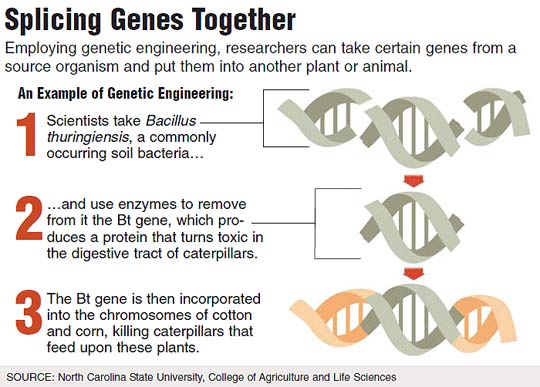 ii
ii
Invasive Species
A variety of ecosystems10 around the world support an even wider variety of wildlife that spans from exquisite florescent fish in the reefs of Hawaii to the putrid, fly pollinated Rafflesia arnoldii11 flower in the rainforest of Indonesia. An ecosystem consists of all the living and non-living factors within an environment in an intricately designed equilibrium that consists of primary consumers, such as plants, and levels of secondary and tertiary consumers that establish a sort of shrinking pyramid of predators and prey. These relationships are held in a very complex and sensitive balance, and one can easily presume how a new predator or even prey may alter the balance of the ecosystem to an often devastating degree. biodiversity of the local environment.
As organisms adapted to other ecosystems, invasive species may confer evolutionary advantages over native species and in genetic terms, such organisms may possess certain advantageous physical traits that manifest from novel genes that were not previously present in the environment. For example, a gene that may provide resistance to natural plant poisons will enable invasive species to proliferate more than native species, which are unable to consume this poisonous plant, and potentially decimate the native plant species and the native predator. An invasive species essentially introduces a new set of genes into the population that is typically kept in some sort of equilibrium in an ecosystem. In this case, pollution involves hundreds and thousands of genes by definition.
According the U.S. Fish and Wildlife Service, estimates place the cost of invasive species at $120 billion in damages each year in the United States alone. In fact, in 2011 the U.S. Department of the Interior spent $100 million on invasive species prevention efforts, rapid response, management, international cooperation, and habitat restoration.14 It is no wonder that U.S. customs places great restrictions on agricultural items and foods brought from abroad. And don’t think this is merely an issue of the nature enthusiast, since this issue takes on a more micro-economic role. In one case study, Vermont and Wisconsin lake property devaluated by 16% and 13% respectively due to an invasive plant called Eurasian Watermilfoil.15 Furthermore, invasive species could increase the price of certain foods such as grain, meats, and fish. Some invasive species go as far as to effect energy production by clogging up Lionfish . Current studies suggest that the lionfish invasion in Florida began from the release of a few organisms that quickly multiplied in large numbers.
 iii
iii
Unfortunately, there are only a few effective methods of controlling invasive species once they have populated an environment. Therefore, the best cure comes in the form of prevention as educated consumers. The U.S. Fish and Wildlife Service offers a range of guidelines for pet owners, agriculturists, and business owners to prevent the accidental spread of invasive species that range from small plants to bigger pets.16 Some of the general recommendations include self education through consultation with local nurseries, as well as sanitary measures such as cleaning construction equipment. In some cases it is difficult to identify whether a species is invasive in the first place, and therefore there must be educational programs in place that are more accessible and perhaps legislative efforts that adapt to the changing landscape of invasive species. Legislation such as The Alien Species Prevention and Enforcement Act17 actually make it illegal to mail invasive species through the U.S. postal service, and progressive legislation such as that introduced by the Plant Protection Act18 works to modernize major statuses pertaining to plant protection and quarantine. The best prevention, however, is awareness through education. Therefore, the control of invasive species is very much in our own hands.
GMOs and Genetic Pollution
Instead of considering thousands of genes in the form of an entire organism invading an ecosystem, another form of genetic pollution comes in the form of an ideological fear that has spawned out of the wonders of genetic engineering. The microscopic consideration, however, is not mutually exclusive from the idea of invasive species as many concerns are along the same lines. Scientists design food crop that are better able to cope with their environment through genetic modifications that confer a type of advantage. These advantaged crops are able to better proliferate and use up the resources of their habitat than do what agriculturalists define as pests. Therefore, it seems that the act of creating GMOs is analogous to introducing invasive species to human controlled environments. Ironically, humans are employing the same strategy that is also responsible for negative environmental impact. But while the strategy is similar, it is arguable whether the effect is really the same. If not GMOs, then certainly pesticide usage would have to make up for extensive crop damage by pests and the potential damage from this act has already been measured to a devastating degree.
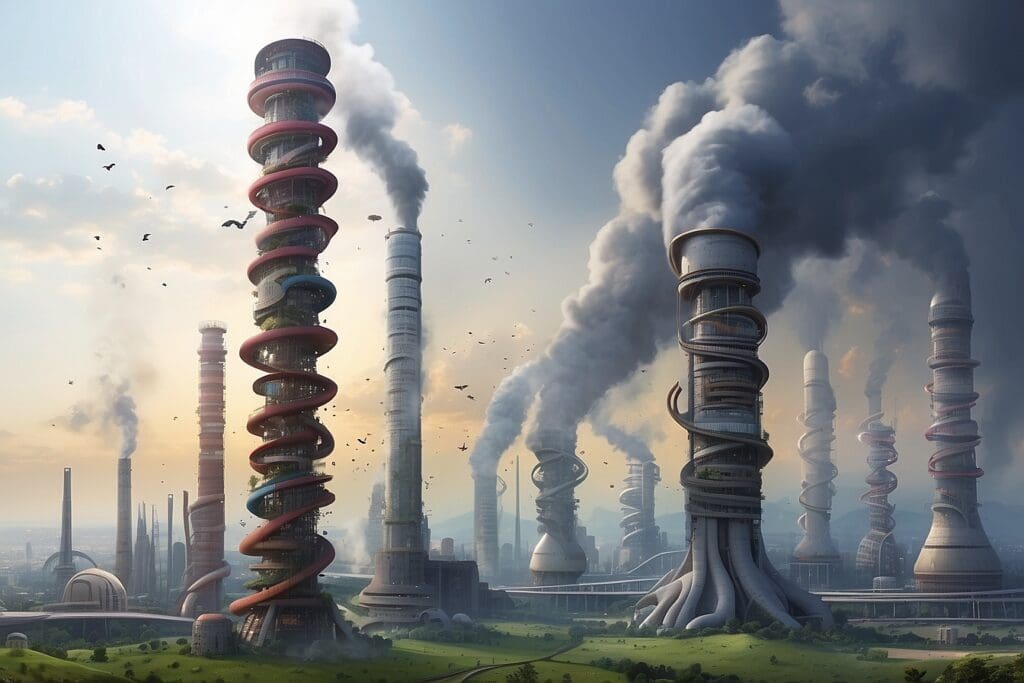
Many of the concerns surrounding genetic pollution in the context of manmade GMOs are centered on a scientifically unfound ability for GMOs to somehow hybridize with native species19 and create dangerous super organisms. Given that these organisms are novel and not well understood in terms of their long term impact, several environmental groups such as Greenpeace are expressing a great deal of concern over the use of GMOs. From a technical standpoint, humans are introducing novel genes into alternate environments but it is questionable whether such genes are truly a form of pollution. Some GMOs can be created with very minor genetic alterations and with lifesaving consequences such as golden rice.20 In the case of golden rice, scientists were able to turn on vitamin-A production pathways in rice that is typically turned off during development. In countries where famine causes unprecedented cases of malnutrition, golden rice has prevented vision loss linked to vitamin-A deficiency.
It is hard to imagine how vitamin-A in rice can devastate the ecosystem, but in other cases the level of modification does become a real concern. Glyphosate , marketed as Roundup®, is one of the most popular broad spectrum herbicides used in the United States.21 As a broad spectrum herbicide, glyphosate is also prone to killing agricultural crop as well, and the answer to this problem came in the form of RoundUp Ready® corn and soybean.22 Scientists at Monsanto® were able to create a variety of corn and soybean that is resistant to the herbicide Roundup®, such that a farmer can use the pesticide as indiscriminately as he wants without worrying about killing edible crop. One of the problems with this action is evolution, since unregulated use of such pesticide could create resistant pests much quicker than anticipated. In this case, the resistance genes may very well be a source of pollution indirectly by promoting deleterious environmental behavior.
The concerns of genes being a source of pollution are very much an important consideration for the future regulation of genetically modified crop. At the moment, however, some dramatic concerns of supernatural animal and plant morphing through genetic engineering can be well ignored. We have already discussed how difficult the process of isolating, transferring, and expressing these genes may be in GMOs. Just because I can isolate a gene coding for a glowing protein does not automatically imply that I am able to create a glow in the dark Zebra. Nature has many biochemical controls in place that prevents indiscriminate genetic catastrophes, and so far genetic manipulation has revolutionized treatments of diseases such as cancer and HIV with many other positive impacts on society.
The genetic consideration of life, which has widely begun to dominate the outlook of life sciences, has put forth numerous considerations regarding the outlook of human behavior into the mystique realms of DNA and genes. Genetic engineering has revolutionized the ways in which the human being has been able to survive in a world rife with population growth and wealth disparity, but has also underscored numerous unanswered questions that express much human concern. As a chapter in Biology that is still incomplete, science may not have all the answers in regards to risk assessment of GMOs and the macroscopic evolutionary landscape of invasive species. While there is still much mystery about this field, the necessity to exert reasonable caution should be an idea that is universally affirmed such that there is benefit, rather than consequence derived from the study of genetics as a means of deciphering our origins and function as a species.



